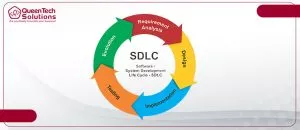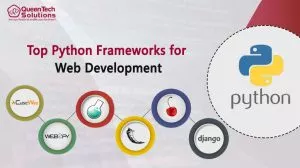- July 27, 2023
- Posted by: Jacky Melek
- Categories: Software Development, Website Development

Software Development Life Cycle (SDLC) Phases & Models
SDLC (Software Development Life Cycle) are systematic approaches or frameworks used in the software development models. These models help guide the development team through the various stages of software development, from initial planning to deployment and maintenance. There are several SDLC models, each with its own set of phases, activities, and deliverables.
Comparison of SDLC models development stages:

- Requirements Gathering and Analysis: Gather and understand project requirements to define the software’s scope and objectives.
- Design: Plan the architecture and detailed specifications of the software based on the requirements.
- Implementation (Coding): Write the actual code to develop the software.
- Testing: Thoroughly test the software to identify and fix any defects or issues.
- Deployment and Maintenance: Deploy the software to users and provide continuous improvements and support to ensure its proper functioning and updates.
SDLC Models
What is the Waterfall Software Development Model?
Waterfall Model: Is one of the oldest and most traditional SDLC models. It is known for its sequential and linear approach to software development.
Advantages of the Waterfall Model:
- Clear and well-defined phases make it easy to manage and understand the development process.
- Suitable for small projects with clear and stable requirements.
- Documentation is extensive, making it easier for maintenance and future development.
Disadvantages of the Waterfall Model:
- Lack of flexibility and adaptability.
- Changes in requirements are challenging to accommodate once a phase is completed.
- Stakeholders may not see the software until late in the software engineering development process. which can lead to surprises or misalignment with expectations.
- It may not be ideal for large and complex projects, as it does not allow for early feedback and course correction.
What is agile methodology? And why is it so important?
In recent years, Agile methodologies like Scrum and Kanban have gained popularity, as they offer more flexibility and customer involvement throughout the development process.
However, the Waterfall Model still finds use in certain projects where requirements are stable, and a well-structured approach is preferred.

The Kanban model is a popular project management and work organization method that originated from the Toyota Production System. It focuses on visualizing work, limiting work in progress, and optimizing the flow of tasks or items through various stages of a process.The key phases are:
- Visualize: In this phase, the workflow is represented visually using a Kanban board. The board typically consists of columns representing different stages or steps in the process, and each column contains cards representing specific tasks or work items.
- Limit Work in Progress (WIP): The Kanban system sets limits on the number of tasks or work items that can be in progress at each stage of the workflow. This helps prevent overloading the team and ensures that work is manageable.
- Flow: As tasks progress through the workflow, team members move the Kanban cards from one column to the next, indicating the progress of the work. This visual representation allows for easy tracking and identification of bottlenecks.
- Manage Flow: Teams continuously monitor the flow of work and identify areas where improvements can be made. They may adjust WIP limits, reorganize the workflow, or optimize processes to improve efficiency.
- Make Policies Explicit: In this phase, the team establishes explicit policies and rules for each stage of the workflow. These policies provide clarity and guidelines for team members to follow.
- Improve Collaboratively: The Kanban model encourages continuous improvement through collaboration. Team members regularly discuss and make decisions together to enhance the workflow and address any issues that arise.
Scrum Model is a specific implementation of the Agile Model and is one of the most widely used Agile frameworks for software development.
The key phases are:
- Product Backlog Creation: The Product Owner creates and prioritizes a list of features and requirements called the Product Backlog.
- Sprint Planning: The Scrum Team selects items from the Product Backlog for the upcoming sprint and defines a Sprint Goal.
- Sprint Execution: The Development Team works on the selected items from the Product Backlog during the sprint, building the software incrementally.
- Daily Stand-up (Daily Scrum): A brief daily meeting where the Development Team synchronizes their work, discusses progress, and identifies any obstacles.
- Sprint Review: At the end of the sprint, the Scrum Team presents the completed work to stakeholders, and feedback is gathered.
- Sprint Retrospective: After the Sprint Review, the Scrum Team reflects on the sprint’s process and identifies improvements for future sprints.
What is the spiral software development models in software engineering?
Spiral Model: This model combines elements of the waterfall and iterative approaches, emphasizing risk assessment and mitigation in each cycle.
The key phases are:
- Planning: In this initial phase, objectives, requirements, and constraints are determined. Risks are identified and evaluated.
- Risk Analysis: Risks identified in the planning phase are further analyzed, and strategies for risk mitigation are formulated.
- Engineering and Development: In this phase, the software is designed, developed, and tested based on the requirements and risk mitigation strategies.
- Evaluation: The completed software is evaluated to assess its progress, effectiveness, and alignment with project goals.
What is the V model in SDLC?
V-Model (Verification and Validation Model): Similar to the waterfall model, but it emphasizes testing and validation at each stage, making it more focused on quality.
The key phases are:
- Requirements Analysis and Specification: In this phase, project requirements are gathered, analyzed, and documented to create a detailed specification.
- System Design: The high-level design of the software is created based on the requirements and specifications from the previous phase.
- Architectural Design: Detailed design and architecture are defined, ensuring that all requirements are adequately addressed.
- Module Design: The detailed design of individual modules or components is established.
- Implementation: The coding and development of the software are carried out based on the design specifications.
- Unit Testing: Each module is tested in isolation to ensure its functionality and correctness.
- Integration Testing: The individual modules are integrated and tested together to verify their interactions.
- System Testing: The complete system is tested as a whole to validate that it meets the requirements and functions correctly.
- User Acceptance Testing (UAT): The software is tested by the end-users to ensure it meets their expectations.
What Is the Iterative Model? (Definition and Steps)
Iterative Model: In this model, the development process progresses through multiple iterations, with each iteration producing a working increment of the software.
The key phases are:
- Requirements Gathering and Analysis: Gather and understand project requirements to define the scope and objectives of the software.
- Design and Development: Develop the software incrementally and iteratively, based on the requirements and feedback from previous iterations.
- Testing and Feedback: Test the software increment to identify issues and gather feedback from stakeholders and end-users.
- Refinement and Reiteration: Based on the feedback and testing results, refine and improve the software in subsequent iterations.
What is the Principle behind the Incremental model?
Incremental Model: This model divides the development process into smaller, manageable parts, and each part is developed and delivered incrementally.
The key phases are:
- Requirements Analysis: Gather and analyze initial requirements.
- Incremental Development: Develop, test, and deliver each increment of the software.
- Feedback and Evaluation: Gather feedback from stakeholders on each increment.
- Repeated Development and Delivery: Repeat the development process for subsequent increments.
- Final Integration: Integrate all increments to form the complete software.
What is the Prototyping Model?
The Prototype Model is a software development approach where a prototype (an early, simplified version of the final product) is created to gather user feedback and refine requirements before developing the complete system.
The key phases are:
- Requirements Gathering: In this phase, the development team works closely with stakeholders to gather and analyze the initial set of requirements for the software.
- Quick Design: The team creates a basic design of the prototype based on the gathered requirements. This design serves as a starting point for the development of the initial prototype.
- Prototype Development: A functional prototype is developed based on the quick design. This prototype typically contains only core features and is not fully refined.
- Prototype Testing: The developed prototype is shared with users and stakeholders to gather feedback and identify any additional or changed requirements.
- Refinement: Based on the feedback received, the development team refines the prototype by making necessary changes, improvements, and additions to better meet the user’s needs and requirements.
- Repeat Testing and Refinement: Steps 4 and 5 are iterated multiple times to create and refine successive versions of the prototype until it adequately fulfills the requirements.
- Final Product Development: Once the prototype reaches a satisfactory level, the development team uses the knowledge gained from the prototype iterations to build the final product.
Conclusion
QTS Software Company is a dynamic and adaptive organization that effectively utilizes a range of software development models, including Waterfall, Agile, Spiral, V-Model, Iterative, Incremental, and Prototype models.
This versatility allows them to cater to diverse final product requirements and deliver high-quality software solutions. QTS’s commitment to excellence, customer satisfaction, and a collaborative approach makes them a trusted partner for clients seeking innovative and successful software development projects.
Contact Queen Tech Solutions today to take your software product to the next level.



